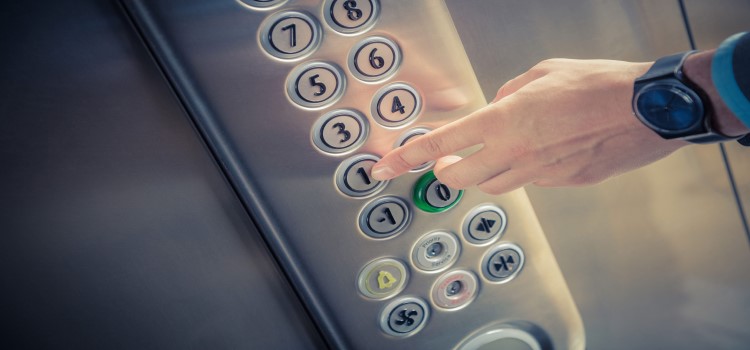
Smart Home Market by Communication Protocol (Wi-Fi, Zigbee, Z-Wave, Bluetooth, and Thread), by Smart Home Hubs (Standalone Hubs and Built-in Hubs), by Voice Assistants Integration (Amazon Alexa, Google Assistant, Apple Siri, and Others), by Product Type (Smart Lighting, Smart Home Security & Surveillance, Smart Entertainment, and Smart Appliances), by Smart Home Compatibility with Smartphones (iOS and Android), by Installation, (DIY Installation and Professional Installation), and by Sales Channel (Online Retailers and Offline Retailers) – Global Opportunity Analysis and Industry Forecast, 2024–2030
Industry: Construction & Manufacturing | Publish Date: 17-Oct-2023 | No of Pages: 579 | No. of Tables: 467 | No. of Figures: 425 | Format: PDF | Report Code : N/A
Smart Home Market Overview
The global Smart Home Market size was valued at USD 121.36 billion in 2023 and is predicted to reach USD 462.94 billion by 2030, with a CAGR of 19.4% from 2024 to 2030.
A smart home, also known as a connected home, refers to a residence equipped with advanced technology and automation systems that enable the control and monitoring of various household devices, appliances, and security features through a centralized network. These smart devices can be remotely managed and often respond to voice commands or preset schedules, enhancing convenience, energy efficiency, and security for homeowners. Smart homes typically include elements such as smart thermostats, lighting systems, security cameras, voice assistants, and other interconnected devices designed to improve the overall living experience.
Rising Disposable Income Worldwide is Further Fueling the Market Growth
Rising disposable income significantly propels the smart home market. It empowers consumers to afford and invest in smart technologies that enhance their quality of life. For instance, the U.S. Bureau of Labor Statistics (BLS) reported that the average annual expenditures for all consumers amounted to USD 72,967 in 2022. Also, Germany's total disposable income increased from approximately USD 615 billion in the first quarter of 2022 to USD 628 billion in 2023. This figure represented a substantial 9.0% increase from the previous year, signifying a significant shift in spending patterns among German households.
With greater financial flexibility, consumers can retrofit their homes with smart devices, personalize their setups, and opt for comprehensive solutions ranging from energy-efficient systems to premium brands. They are more inclined to embrace smart home ecosystems, hire professionals for integration, and be early adopters of these innovations. In luxury real estate, smart features are integrated, and home improvement projects often include smart home upgrades. Overall, increased disposable income broadens the market by expanding the consumer base and driving the demand for a wide range of smart devices and systems.
The Growing Penetration of IoT Devices Boosts the Smart Home Market
The smart home market report is on the rise, and a key driving factor of this growth is the widespread adoption of the Internet of Things (IoT) devices. The number of IoT devices worldwide is forecasted to almost double from 15.1 billion in 2020 to around 29 billion by 2030. These IoT devices are at the core of smart homes, bringing connectivity and convenience to everyday living. They enable seamless communication between various smart devices in a home, allowing homeowners to control functions such as lighting, heating, security, and entertainment from their smartphones or central hubs.
IoT devices also automate tasks, such as adjusting thermostats based on occupancy and weather conditions, leading to energy savings and comfort. IoT ecosystems are scalable and customizable, and support health monitoring. This attracts consumers with continuous innovation and data insights. The affordability of IoT devices encourages more people to embrace the smart home lifestyle, making it an integral part of modern living.
Security and Data Privacy Concerns Restrain the Market Growth
The growth of the smart home market faces a significant hurdle due to security concerns associated with these connected systems. Smart devices such as thermostats, cameras, and door locks are susceptible to hacking, which can compromise the privacy and safety of residents. This vulnerability often stems from weak or easily guessable passwords and inadequate Wi-Fi network security. Hackers exploit these weaknesses to gain unauthorized access, potentially controlling devices or accessing sensitive data. To mitigate these risks, smart homeowners must prioritize robust password practices, regularly update device firmware, and secure their home networks to reduce the threat of cyber-attacks and safeguard their smart homes against potential breaches.
Introduction of Blockchain Technology in Smart Home Devices to Enhance Data Safety
Blockchain technology, known for its strong security and transparency features, holds significant potential to bolster the security and privacy of smart home systems. It achieves this by encrypting and securely storing sensitive smart home data, granting users control over people permitted to access their information and minimizing the risk of unauthorized access. Blockchain verifies device identities, ensuring only trusted devices interact within the smart home network. It also automates tasks through tamper-proof smart contracts.
Moreover, it decentralizes device control, reduces vulnerabilities, and facilitates transparent access control and permissions management. Integrating blockchain into smart homes enhances security and privacy, creating a safer and more confidential smart home environment. Thus, it is expected to create ample growth opportunities for the market.
North America Dominates the Smart Home Market
The rapid growth of digitalization coupled with a strong focus on Energy Efficiency Initiatives in countries including the U.S. and Canada drive the global market in the region. Consumers increasingly adopt smart home technologies to enhance convenience and control as more aspects of daily life become digitally connected. The market in the U.S. is expected to grow steadily in the next five years, with user penetration reaching 68.64% by 2027. This represents a 20.7% increase from 2023. This dual momentum of digitalization and energy-consciousness pushes the smart home market share forward as Americans seek innovative solutions to make their homes more intelligent and environmentally friendly than before.
Also, the increasing demand for smart home products in the U.S. and Canada can be attributed to several factors, including the growing concerns regarding cybersecurity incidents. For instance, over 7 in 10 Canadians experienced a cybersecurity incident in 2022. The percentage of Canadians who experienced cybersecurity incidents increased from 58% in 2020 to 70% in 2022, a 12% year-on-year increase. Thus, there is an increase in the adoption of smart home security solutions to bolster their security and protect against cyber threats. The desire for enhanced control and monitoring of connected devices coupled with a focus on safeguarding personal data and privacy is fuelling the adoption of the smart home market.
Asia-Pacific is Expected to Show Steady Growth in the Smart Home Market
Asia-Pacific is expected to witness an increased demand for smart homes in the coming years, driven by factors such as the high smartphone penetration rates in countries including China and India, providing a solid foundation for the widespread adoption of smart home devices. For instance, in 2022, nearly 72% of the Chinese population owned smartphones. It is also projected that around 83% of people in China will be using smartphones by 2027. The total number of smartphone users in 2022 surpassed one billion. With most of the population owning smartphones, consumers can easily control and manage their smart home gadgets through dedicated mobile apps. This accessibility and familiarity with smartphone interfaces make smart home technology more appealing and user-friendly than before, driving its popularity among Chinese consumers.
Also, the presence of key market players such as Samsung and LG is propelling the growth of the market. They are adopting various strategies in the region, including product launches. For instance, in January 2023, Samsung launched SmartThings Station, a new addition to its smart home ecosystem. This innovative product aims to enhance the smart home experience by centralizing control and connectivity. It is a hub for various smart devices, allowing users to manage and monitor their smart home ecosystem seamlessly. This launch reflects Samsung's ongoing commitment to advancing the smart home market by providing integrated and user-friendly solutions that simplify home automation and improve overall consumer convenience.
Competitive Landscape
Several market players operating in the smart home industry include LG Electronics, ASSA ABLOY, Amazon, Inc., Samsung Electronics, Sony, Emerson Electronic Co., Johnson Controls International PLC, Centrica Connected Home Limited, Resideo Technologies, Inc., Apple, Inc., and others. These market players are adopting product launch strategies across various regions to maintain dominance in the smart home industry.
For instance, in April 2023, Resideo Technologies launched its Honeywell Home T10+ Smart Thermostat Kits, which provide comprehensive control over indoor air quality and comfort. The T10+ Smart Thermostat Kit with RedLINK 3.0 can be installed quickly, and connected directly to the home's WiFi network. It is upgraded to multi-stage or control indoor air quality accessories such as humidifiers, dehumidifiers, and air cleaners.
Moreover, in April 2023, Sony launched several new Bravia TV models in large screen sizes in the U.K. and European markets. The 2023 Bravia TV range includes four new models in the BRAVIA XR range, with the XR X95L Mini LED TV primed for PS5 gaming.
Furthermore, in April 2023, LG Electronics launched its LG ThinQ UP upgradeable home appliances globally, including refrigerators, washers, dryers, oven ranges, and dishwashers. These appliances are built around the customer-centric concept and can incorporate new features throughout their life, providing more value to users over time.
Smart Home Market Key Segments
By Communication Protocol
-
Wi-Fi
-
Zigbee
-
Z-wave
-
Bluetooth
-
Thread
By Smart Home Hubs
-
Standalone Hubs
-
Built-in Hubs
By Voice Assistants Integration
-
Amazon Alexa
-
Google Assistant
-
Apple Siri
-
Others
By Product Type
-
Smart Lighting
-
Smart Bulbs
-
Smart Light Strips
-
Smart Switches
-
-
Smart Home Security and Surveillance
-
Smart Cameras
-
Video Doorbells
-
Smart Locks
-
Security System
-
-
Smart Entertainment
-
Smart TVs
-
Smart Speakers
-
Streaming Devices
-
-
Smart Appliances
-
Smart Refrigerators
-
Smart Ovens
-
Smart Washing Machines
-
Smart Dishwashers
-
Smart Home HVAC Management
-
Other Smart Appliances
-
By Smart Home Compatibility with Smartphones
-
iOS
-
Android
By Installation
-
DIY Installation
-
Professional Installation
By Sales Channel
-
Online Retailers
-
Retailers
By Region
-
North America
-
The U.S.
-
Canada
-
Mexico
-
-
Europe
-
The U.K.
-
Germany
-
France
-
Italy
-
Spain
-
Denmark
-
Netherlands
-
Finland
-
Sweden
-
Norway
-
Russia
-
Rest of Europe
-
-
Asia-Pacific
-
China
-
Japan
-
India
-
South Korea
-
Australia
-
Indonesia
-
Singapore
-
Taiwan
-
Thailand
-
Rest of Asia-Pacific
-
-
Rest of the World (RoW)
-
Latin America
-
Middle East
-
Africa
-
Report Scope and Segmentation
|
Parameters |
Details |
|
Market Size in 2024 |
USD 121.36 Billion |
|
Revenue Forecast in 2030 |
USD 462.94 Billion |
|
Growth Rate |
CAGR of 19.4% from 2024 to 2030 |
|
Analysis Period |
2023–2030 |
|
Base Year Considered |
2023 |
|
Forecast Period |
2024–2030 |
|
Market Size Estimation |
Billion (USD) |
|
Growth Factors |
Rising disposable income worldwide The growing penetration of IoT devices |
|
Countries Covered |
28 |
|
Companies Profiled |
10 |
|
Market Share |
Available for 10 companies |
|
Customization Scope |
Free customization (equivalent up to 80 working hours of analysts) after purchase. Addition or alteration to country, regional, and segment scope. |
|
Pricing and Purchase Options |
Avail customized purchase options to meet your exact research needs. |
Key Players
-
LG Electronics
-
ASSA ABLOY
-
Amazon, Inc.
-
Samsung Electronics
-
Sony
-
Emerson Electronic Co.
-
Johnson Controls International PLC
-
Centrica Connected Home Limited
-
Resideo Technologies, Inc.
-
Apple, Inc.




 Speak to Our Analyst
Speak to Our Analyst


































